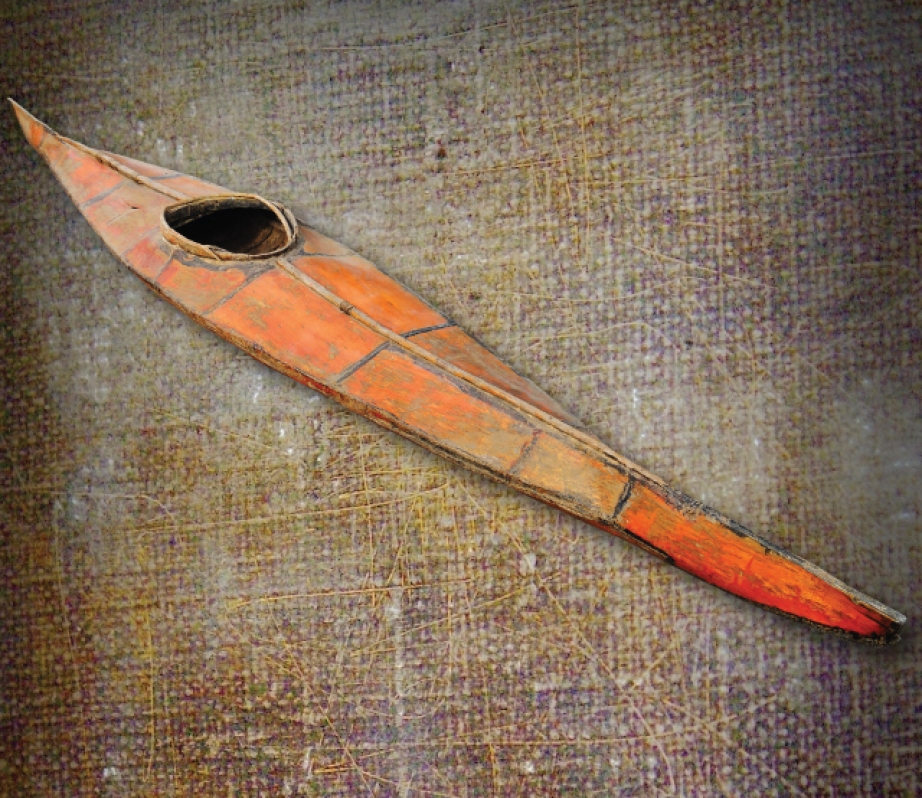It’s always fun when something old and floaty turns up in someone’s barn or boathouse. It’s so much better when it looks like it might be the missing link—a fabled canoe that will connect the heritage of canoes and kayaks perfectly. Just like evolutionists, any good canoe museum curator is always curious about a possible missing link. And a few months ago, I thought we had it.
When Graham Mackereth from Pyranha Mouldings in the U.K. wrote me with news of what he thought might be an Inuit-style kayak made out of birch bark, I was intrigued. The only boats related to what he described are Gwichin-style canoes from the Mackenzie River Delta, more kayak than canoe, with long bark decks at one or both ends.
From his little museum in England, Mackereth took photos of his curious craft and sent them along as proof of what he had. It was nothing like the canoes from the Mackenzie Delta, or anywhere else I knew for that matter. I wrote back suggesting that this could be the missing link we’ve been searching for.
Upon examining the photos, it was clear that this was not the bark of the paper birch, if it was bark at all. After years in the boating world, the heritage of most canoes that I come across is easy to recognize. This one had me stumped. On the strength of questions raised about its history, I decided to involve a few others in the quest.
Ken Lister, of the world-famous Royal Ontario Museum, was first to chime in. He observed that the rib ends of this hybrid craft are sandwiched between the inner and outer gunwales, which made him conclude that the boat was not Native-made.
“This is a craft that celebrates the creative mind and proves migration theories,” Lister said. “It reminds me a little bit of the Piltdown Man, with the exception that this one is actually real and quite serviceable,” he added, referring to the early-twentieth century hoax in which bone fragments were presented as the fossilized remains of a previously unknown early human.
Kayak aficionado, Vernon Doucett, joined the conversation next to say that, in his estimation, the boat was not made of bark, but maybe birch plywood. He suggested it might be built on a Ken Littledyke design, a British shop teacher who produced designs in the ‘60s and ‘70s.
Ex-pat British canoe and kayak guru, Alan Byde, added his voice, arguing that the mystery vessel reminded him of a chap in the U.K. who used two thick sheets of marine plywood to make a kayak a bit like this. “My guess is the mystery craft was built by someone who knew the Bob Vardy method. Definitely not a Ken Littledyke,” he asserted.
Which brought Mackereth back into the conversation—he’d discovered that the boat is made of a veneer made to look like bark. Based on comments from the curators and on closer examination, he’d found screws and other decidedly non-Inuit features. “Now that I know for certain that it’s from my side of the pond, I’m left with the significant question of why,” he wrote.
One mystery solved and another created. The search continues.
James Raffan is the director of the Canadian Canoe Museum. For a full version of the comments from the international curators, and for more on the hunt for the missing link, see his blog at www.jamesraffan.ca.




